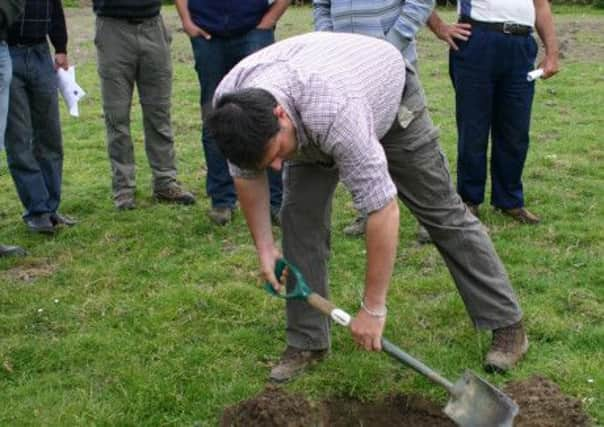How to grow the best grass at monitor farm


The majority of the Hundleshope land, 1,450 of 1,800 acres is hill, peaking at 2,200 feet and is home to a flock of 364 Blackfaces.
The lower ground supports a 79-strong suckler herd, flock of 450 Scotch Mules and Texel crosses and 170 hoggs and 30 acres of spring barley.
Advertisement
Hide AdAdvertisement
Hide AdFarmers Kate and Ed Rowell want to address improving the lower ground grass during the three-year monitor farm term. Last year they made award-winning silage.
Welsh grassland specialist Charlie Morgan suggested to the group soil testing and dealing with any compaction problems.
He said: “The soil is the most important thing on your farm. Soil compaction restricts both (grass) root depth and oxygen. It also negates the benefits of lime and fertiliser applications.”
Mr Morgan dug holes in several fields finding the best soil structure in an area of old hill ground which has only grazed sheep and is rarely travelled over by wheels. He recommended aerating compacted soil in the autumn.
The next Peebles monitor farm meeting is an open day at the end of August when the farm’s changes over the last 18 months will be reviewed.